What have you done to upgrade your sleep? Invested in a new mattress? Said goodbye to cell phones at night? Taken melatonin? There’s a simpler solution to help induce sleep, though, and it’s completely natural and free. The technique(s) in question? Breathing exercises for sleep.
That’s right: you can regulate your breathing to reap some serious health benefits. From helping you fight insomnia to reducing stress and more, proper breathing practices can help you center yourself and feel better.[1,2] We’re breaking down five popular (and effective) techniques that help many people fight stress and get better sleep.
Important Information to Know
Before attempting any of the following exercises, please read the following:*
- None of these exercises should induce dizziness or lightheadedness; if these symptoms occur, cease the breathing exercises immediately.
- Never strain the head, neck, or any other body part to perform these exercises.
- Do not force breathing. Let it come naturally.
- Not everyone should practice these exercises; always consult with a doctor before trying a new breathing technique.
1) Diaphragm Breathing / Deep Breathing
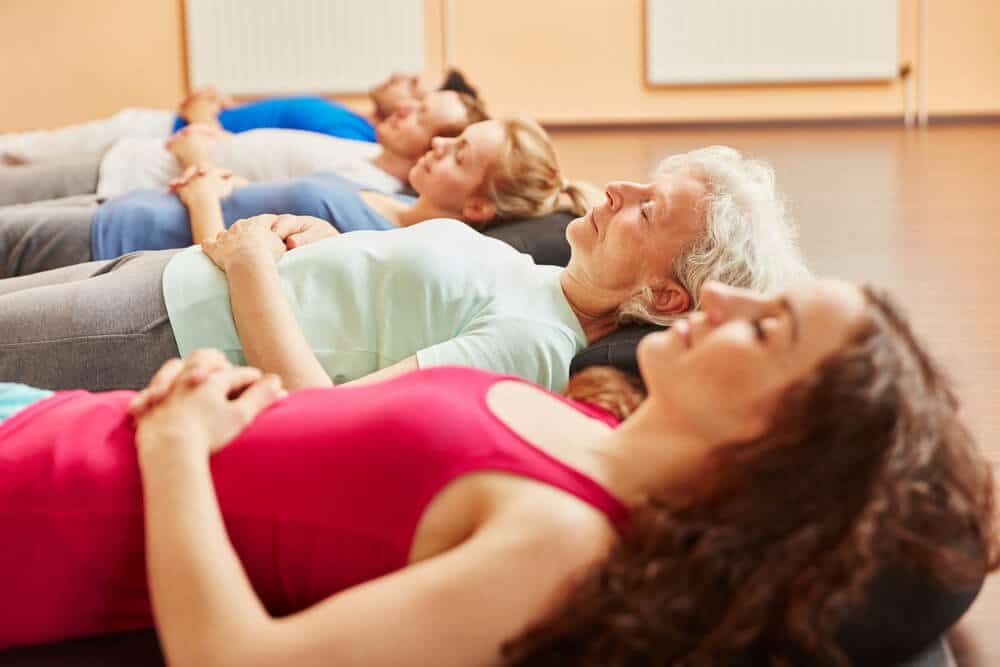
Let’s start with one of the most basic breathing techniques out there: diaphragm breathing. You may also know it as deep breathing or even belly breathing. Research shows that properly practiced deep breathing exercises are wonderful for your health beyond just helping you sleep. They can help you deal with stress, improve your attention and mindfulness, and might even lower cortisol levels.[3] In fact, this position may also be beneficial to those who suffer from chronic lung conditions and diseases.[4]
The key to this technique is to avoid shallow chest breaths by breathing instead with the diaphragm. The diaphragm is a system that lies low in the chest, effectively dividing your chest from the rest of your abdomen. Breathing through the diaphragm feels like you’re actually breathing in through your belly, hence the name of this method. So, when you breathe in through your diaphragm, you should notice your stomach rising and falling.
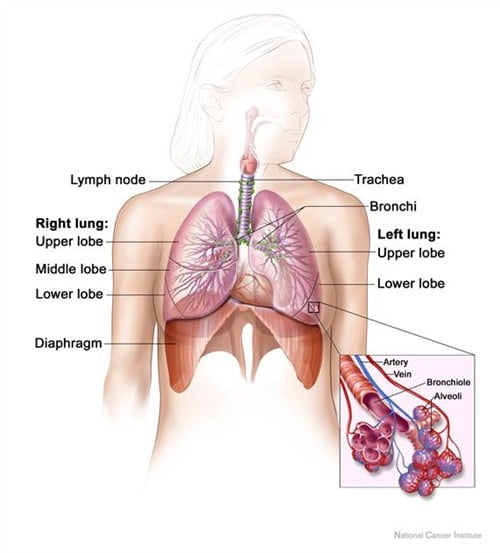
How to Do It
- Sit up straight or lie down. Just make sure you’re comfortable.
- With a closed mouth, inhale deeply from the nose. Make sure you are breathing through the diaphragm; avoid shallow chest breaths.
- When you exhale, slowly do so through your mouth.
- Repeat for 5-10 minutes.
2) 4-7-8 Method / Relaxing Breath
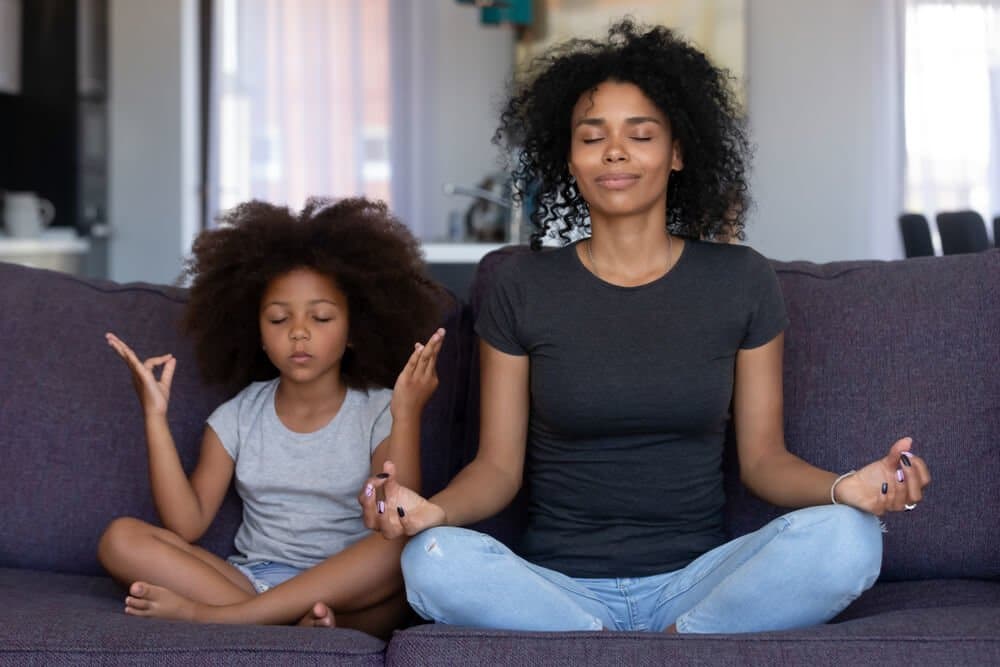
It’s as simple as 1-2-3 4-7-8. This popular breathing method, also known as relaxing breath, is a simple way to unwind after a long day.
How to Do It
- Get into a comfortable upright position.
- Breathe in deeply for 4 seconds.
- Hold the breath for 7 seconds.
- Breathe out for 8 seconds.
- Repeat for a few minutes.
3) Bhramari Pranayama / Humming Bee Breath
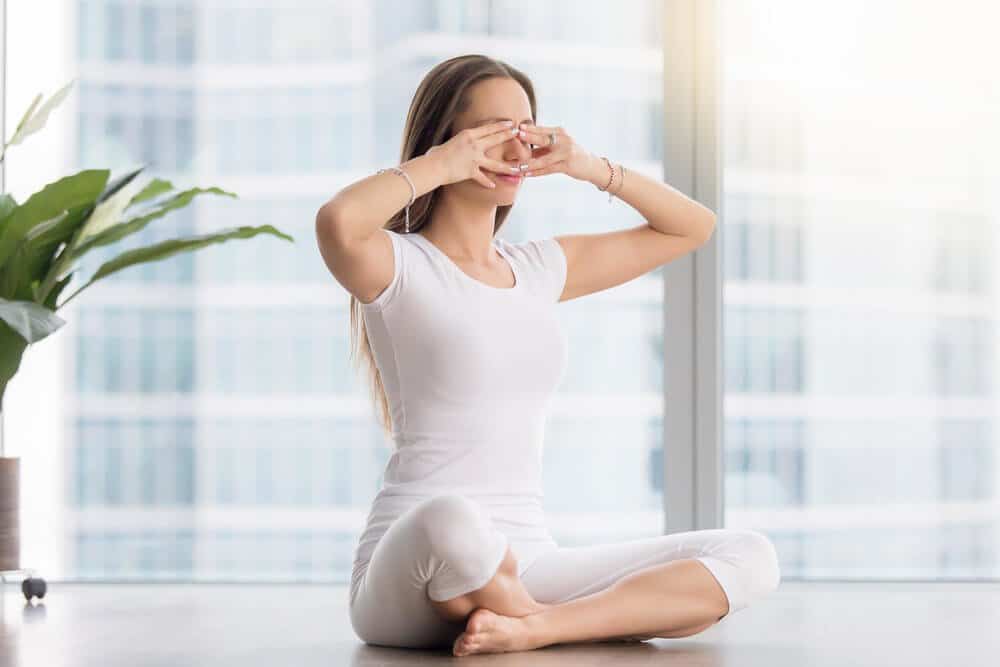
Pranayama essentially refers to controlled, mindful breathing practices; it’s rooted in yoga, and the practice dates back thousands of years. Bhramari pranayama is a special type of pranayama that incorporates controlled vibrations into your breathing. It’s also known as humming bee breath, so named because it produces a humming sound that some liken to a buzzing bee.
The benefits to this technique outside of potentially improved sleep quality? Research suggests this method benefits the brain and positively affects hormone levels like cortisol.[5] Proper use of this technique can also mean lowered heart rate and a reduction in stress.[6]
How to Do It
- Sit with your eyes closed.
- Straighten your spine.
- Place the index fingers or thumbs over the ears.
- Deeply and slowly inhale through your nose for about 5 seconds.
- Deeply and slowly exhale through the nose for about 15 seconds.
- As you exhale, you should produce a “hm” or humming sound, generated from the back of the throat. Chanting Om/Aum may also achieve the same effect.
- Repeat for 3-4 minutes.
- Rest for 1 minute before repeating this entire process again. Do not perform more than 5 complete cycles at once.
4) Nadi Shodhana / Alternate Nostril Technique

Nadi shodhana is another pranayama that’s also known as the alternate nostril technique. Like other pranayamas, this method can induce a relaxed state of being.[7] This method involves inhaling through the left nostril and exhaling through the right nostril.
How to Do It
- Sit with your eyes closed.
- Straighten your spine.
- Lightly place your right index finger and middle finger on your forehead.**
- Lightly place your right thumb over your right nostril.
- Slowly and deeply inhale through the left nostril for 4 counts.
- Lightly place the right ring finger and pinky over the left nostril. Hold the breath for about 2 counts.
- Keeping the left nostril blocked, remove the thumb from the right nostril. Exhale through the right nostril for 4 counts.
- Repeat for 2-10 minutes. Beginners should perform for no more than 2 minutes at once.
**Many people slightly vary their hand position; however, the right thumb should always align with the right nostril.
5) Double Exhalation / 2-to-1 Technique
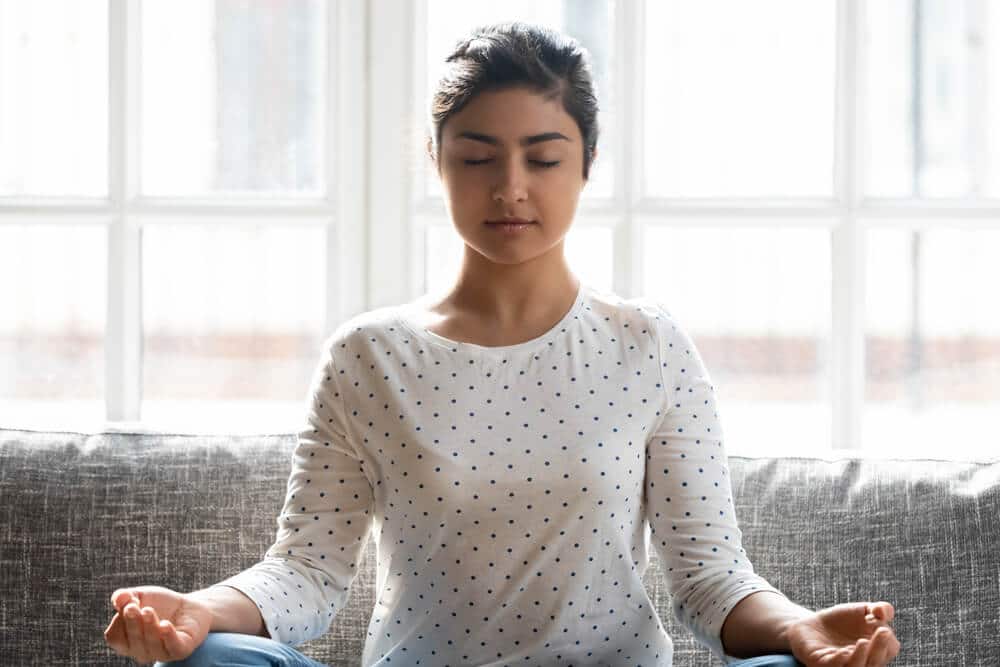
Another technique based in yogic tradition? Absolutely. Besides aiding sleep, research suggests this technique may help with hypertension[8] and may even be good for the heart.[9] The method in question? It’s known as double exhalation, or the 2-to-1 technique. The method is fairly simple: exhale twice as long as you inhale.
How to Do It
- Position yourself comfortable upright.
- Slowly and deeply inhale for 2 or 4 counts.
- Slowly and deeply exhale for 4 or 6 counts.
Final Thoughts
When it comes to improving sleep quality, you don’t have to shell out lots of money or make radical lifestyle changes. Instead, conscientious breathing exercises may help you achieve the sleep you crave, all the while offering you a host of other health benefits. Improved sleep through methods as easy as breathing? Yes, please!
*Disclaimers: Never start a new exercise routine without first consulting a doctor. This article is purely for reference purposes and does not constitute professional advice; it is not meant to diagnose, treat, cure, or prevent any disease or condition.
Terms
- Diaphragm: A section of the body that affects breathing and effectively separates the chest from the rest of the abdomen.
- Pranayama: Ancient yogic practices that involve controlled, mindful breathing.
References
[1]Russo, M. A., Santarelli, D. M., & O’Rourke, D. (2017). The physiological effects of slow breathing in the healthy human. Breathe (Sheffield, England), 13(4), 298–309. doi:10.1183/20734735.009817
[2]Jerath, R., Beveridge, C., & Barnes, V. A. (2019). Self-Regulation of Breathing as an Adjunctive Treatment of Insomnia. Frontiers in psychiatry, 9, 780. doi:10.3389/fpsyt.2018.00780
[3]Ma, X., Yue, Z. Q., Gong, Z. Q., Zhang, H., Duan, N. Y., Shi, Y. T., … Li, Y. F. (2017). The Effect of Diaphragmatic Breathing on Attention, Negative Affect and Stress in Healthy Adults. Frontiers in psychology, 8, 874. doi:10.3389/fpsyg.2017.00874
[4]American Lung Association. (2018). Belly breathing. Retrieved from https://www.lung.org/lung-health-and-diseases/lung-disease-lookup/copd/patient-resources-and-videos/belly-breathing-video.html
[5]Kuppusamy, M., Kamaldeen, D., Pitani, R., Amaldas, J., & Shanmugam, P. (2017). Effects of Bhramari Pranayama on health – A systematic review. Journal of traditional and complementary medicine, 8(1), 11–16. doi:10.1016/j.jtcme.2017.02.003
[6]Kuppusamy, M., Kamaldeen, D., Pitani, R., & Amaldas, J. (2016). Immediate Effects of Bhramari Pranayama on Resting Cardiovascular Parameters in Healthy Adolescents. Journal of clinical and diagnostic research : JCDR, 10(5), CC17–CC19. doi:10.7860/JCDR/2016/19202.7894
[7]Goyal, R., Lata, H., Walia, L., & Narula, M. K. (2014). Effect of pranayama on rate pressure product in mild hypertensives. International journal of applied & basic medical research, 4(2), 67–71. doi:10.4103/2229-516X.136776
[8]Adhana, R., Gupta, R., Dvivedii, J., & Ahmad, S. (2013). The influence of the 2:1 yogic breathing technique on essential hypertension. Indian journal of physiology and pharmacology, 57(1): 38-44.
[9]Nivethitha, L., Mooventhan, A., & Manjunath, N. K. (2016). Effects of Various Prāṇāyāma on Cardiovascular and Autonomic Variables. Ancient science of life, 36(2), 72–77. doi:10.4103/asl.ASL_178_16


